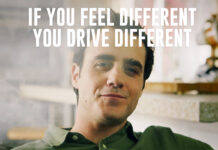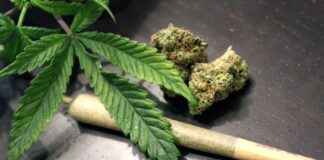Amid explicit racism in enforcement and unprecedented budget shortfalls, NYC must redirect $1 billion of NYPD FY21 budget to impacted communities
New York, NY — New York City criminalizes drugs and low-level broken windows offenses at a startling rate, with enforcement in these areas accounting for a vast proportion of the NYPD’s policing activities and the city’s budget, according to a new brief from Drug Policy Alliance. DPA released the brief in support of the Communities United for Police Reform coalition call for Mayor de Blasio and the NYC Council to cut the FY21 NYPD expense budget by $1 billion and redirect savings to core needs in Black, Latinx and other NYC communities of color that have long been the target of the drug war and racist policing.
The brief, “NYC’s Costly Drug Enforcement & Broken Windows Policing,” finds that in 2019, NYC spent an estimated $96 million enforcing drug arrests and violations, and an estimated $456 million enforcing low-level broken windows offenses, which accounted for 28.5% of all NYPD arrests and violations issued for the year.
“For decades, we’ve seen the harms of overpolicing up close in our work to end the marijuana arrest crusade in New York. We’ve watched as policing has played a pivotal role in the racist drug war and how resources have been funneled into law enforcement instead of vital services that make our communities safer. In too many cases, drugs have been used by the NYPD — the largest and most militarized police force in the United States — as an excuse to target, harass, assault and kill Black people,” said Melissa Moore, New York State Deputy Director at Drug Policy Alliance. “It’s beyond time to shift resources and reinvest that funding into ending our city’s overdose crisis, homelessness, and vast inequality – especially as we face extreme budget shortfalls due to the pandemic. Mayor de Blasio and the NYC Council must act in this historic moment to cut at least $1 billion from the NYPD’s FY21 expense budget and reallocate those resources to the more relevant city agencies, harm reduction programs, and community-based organizations who are better trained and equipped to actually keep our communities safe.”
In 2019, there were more than 21,000 drug enforcement arrests and violations in New York City, with two-thirds being for only possession of marijuana, a controlled substance, or paraphernalia. Further, nearly 15,000 summonses were issued by the NYPD for marijuana in 2019, accounting for 17% of all criminal summonses issued citywide that year.
Stark racial disparities persist among these drug arrests and violations, despite data showing similar rates of use across populations. In 2019, more than 45% of people arrested or cited for drug offenses in NYC were Black, despite Black New Yorkers making up under 25% of the city’s total population. A further 38.8% were Latinx, with Latinx people making up less than 30% of the city’s total population. Only 11.7% of people arrested or cited for drug violations were white, yet white people comprise 47.2% of the city’s population.
The trends in drug enforcement in NYC mirror enforcement of other low-level offenses, often referred to as broken windows policing. Extreme racial disparities exist in broken windows enforcement as well: more than 45% of people arrested or cited for broken windows offenses in NYC were Black, 33% were Latinx, and only 15% of people were white. This is nearly an inversion of the proportion of each group within the city’s population — and reflects racialized targeting of communities of color for broken windows enforcement.
“The drug war has been waged on Black and Brown communities since its inception, and the police have acted as its foot soldiers. They have, and always will, constantly target us,” said Hiawatha Collins, Community Leader and Board Member at VOCAL-NY. “We can’t talk about the resources people who use drugs need without ending the racist policies and policing of our bodies and neighborhoods. It’s time to defund the NYPD by at least $1 billion this year, and invest in housing, harm reduction, healthcare, and social services. We can’t wait a second longer as we continue to die from preventable overdoses at historic numbers.”
Read the full brief here.











